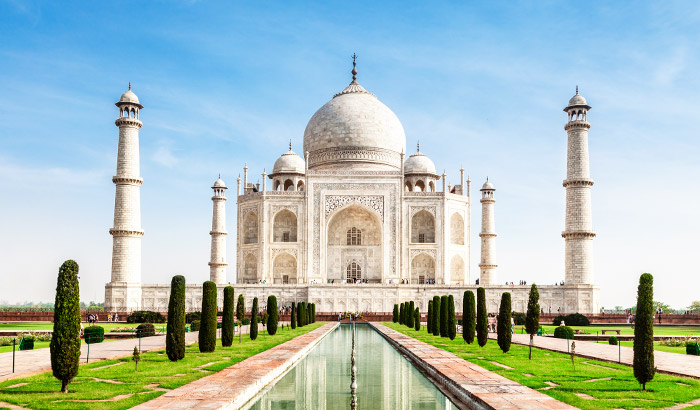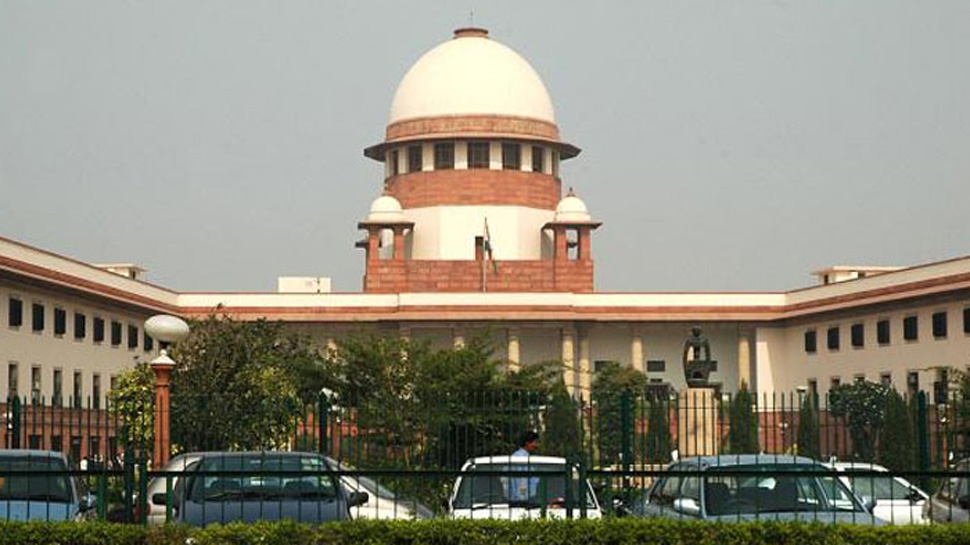
Supreme Court Extends Last Date To Submit Vision Document Over The Issue Of Taj Mahal Protection
New Delhi: The time to submit a vision document over the issue of protecting Taj Mahal from pollution by the Uttar Pradesh government was extended by the Supreme Court till November 15.

The state government of Uttar Pradesh said before the bench headed by Justice Madan B Lokur, that declaring the whole of Agra city as a heritage city would prove to be very difficult. The apex responded by asking the state government to declare some of the portions of the Agra city to be a heritage one.
The court was informed by the state government that the Centre for Environmental Planning and Technology from Ahmedabad was assisting it to declare areas surrounding the Taj Mahal as heritage.

The matter has been added to the list for further hearing on November 29.
The Supreme court had earlier allowed time till October 15 to the state government, but as of today, it was extended after Additional Solicitor General (ASG) Tushar Mehta and advocate Aishwarya Bhati sought for an extension of the date. Both of the counsels are representing the Uttar Pradesh government.
In the earlier hearing, counsel ASG ANS Nadkarni, who was appearing for the Central government, had said that it has already communicated to the government of Uttar Pradesh to submit a proposal to declare the city for Agra as a heritage city.
He had said that the process of preparing a heritage plan for the Taj has been taken up by the Archaeological Survey of India (ASI), which would be filed with the UNESCO within three months.
The apex court had earlier directed the authorities to consider the larger perspective on issues of pollution and green cover while preparing a vision document and also warned that there would be no “second chance” to preserve the Taj Mahal.
The Supreme court directed the state government to prepare the vision document by keeping attention to some important factors like vehicular traffic, pollution from nearby industries which come under the Taj Trapezium Zone (TTZ) and also the water level of river Yamuna. It further said that, that the Taj Mahal would “of course be the center piece” of the matters to be considered.
The Taj Trapezium Zone covers the area of almost 10,400 sq km. The areas that come under it are the districts of Agra, Mathura, Etah, Firozabad, and Hathras of Uttar Pradesh and the Bharatpur district of Rajasthan.
“If the Taj Mahal goes once, you will not get a second chance,” a bench of Justices Madan B Lokur, S Abdul Nazeer and Deepak Gupta had told the project coordinator, who is involved in the procedure of preparing the vision document.
The government of Uttar Pradesh had earlier stated that the school of Planning and Architecture in Delhi was in the process of preparing a vision document. Alongside looking into the issue of protecting the Taj Mahal, they said that they were considering a larger comprehensive plan to resolve all these issues.
One of the petitioners in the case of protecting Taj Mahal, Environmentalist MC Mehta, had told the court that the area covered by the greenery is reduced as of now and the Yamuna floodplains are encroached as of now.
While talking about the issue, he referred to the 1996 order of Supreme Court in the case and said that the area is covered by several industries and many of them operate beyond their capacity.
The 1996 order itself says that there were 511 industries in the area out of which the court had at that time said that it would deal with 292 industries separately, Mr. Mehta said.
You May Also Read: Congress To Hold A Meet With Vigilance Commission To Seek A Probe Over Rafale Deal